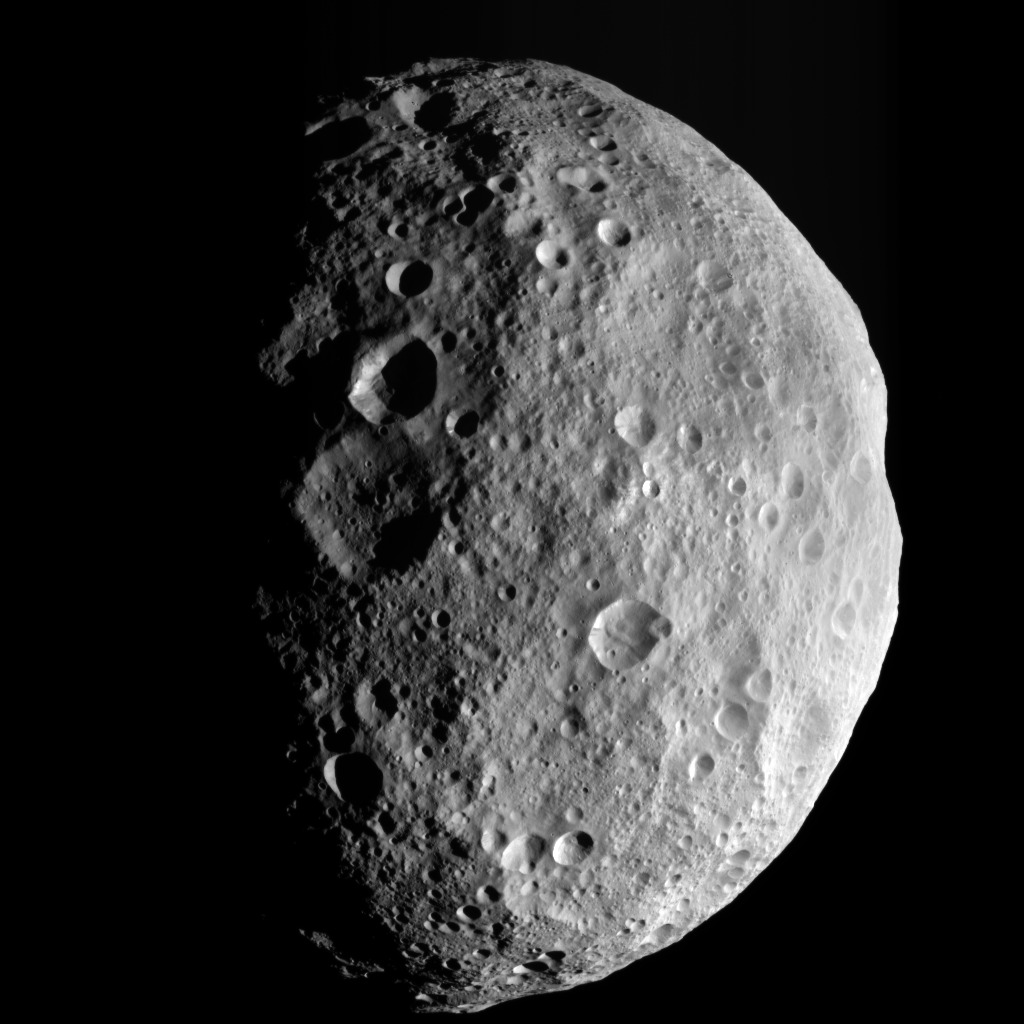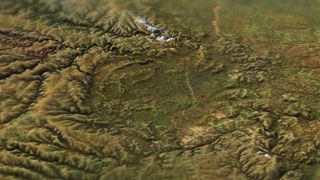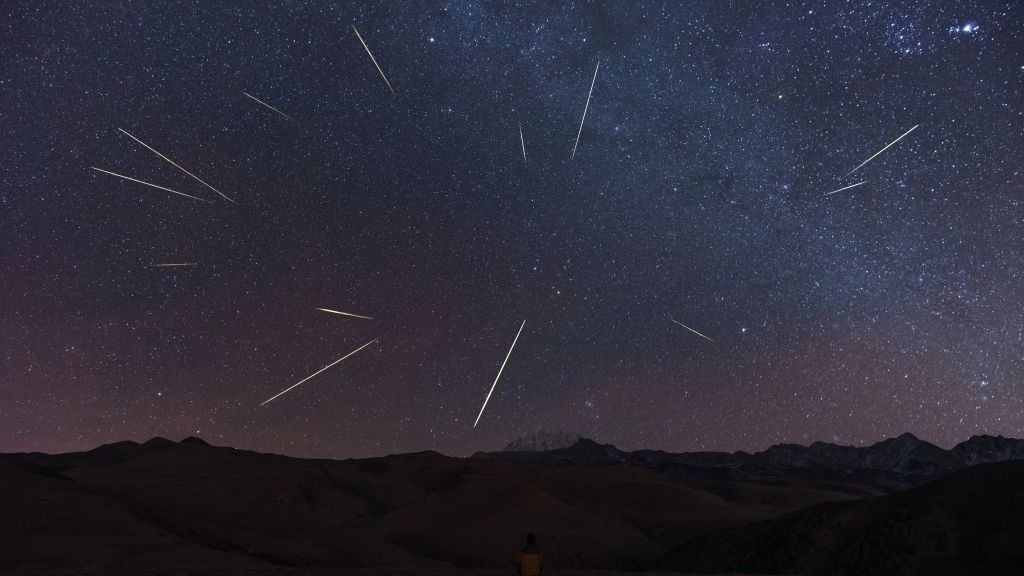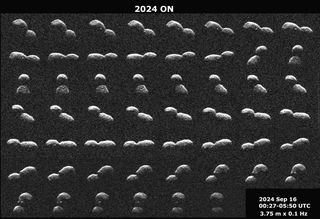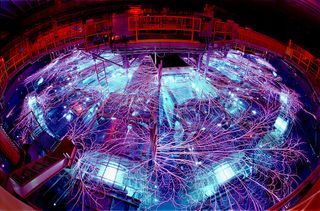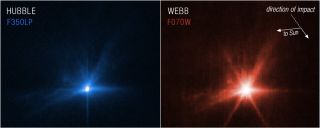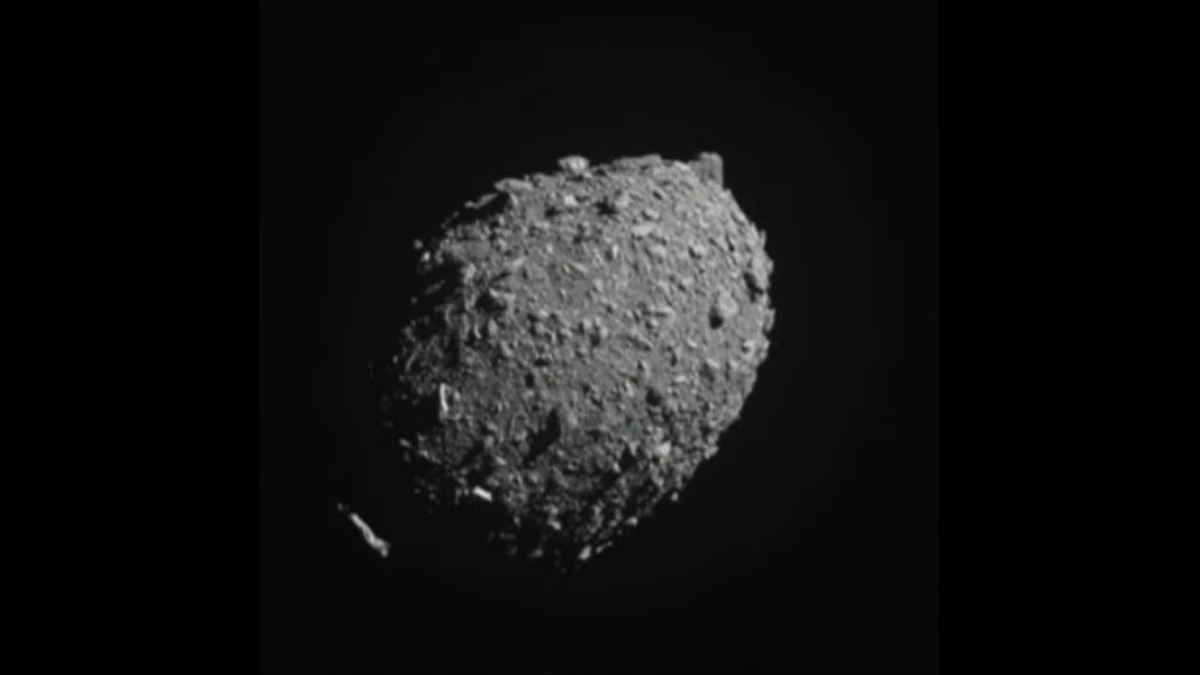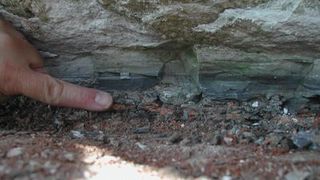NASA’s Dawn spacecraft captured this image of Vesta as it left the giant asteroid’s orbit in 2012. The framing camera was looking down at the north pole, which is in the middle of the image. NASA/JPL-Caltech/UCLA/MPS/DLR/IDA Known as flow formations, these channels could be etched on bodies that would seem inhospitable to liquid because they are exposed to the extreme vacuum conditions of space. Pocked with craters, the surfaces of many celestial bodies in our solar system provide clear evidence of a 4.6-billion-year battering by meteoroids and other space debris.…
Read MoreTag: Asteroids
2 huge asteroid strikes 36 million years ago didn’t change Earth’s climate over the long haul, study finds
Two enormous asteroids that struck Earth about 36 million years ago did not cause any long-lasting shifts to our planet’s climate, according to new research. The space rocks, both estimated to be no larger than 5 miles (8 kilometers) wide, impacted Earth within 25,000 years of each other. Geologically speaking, that’s a relatively short period of time, offering scientists a unique opportunity to study how our planet’s climate responded to such an onslaught. Isotopes in the fossils of tiny marine organisms that lived at the time suggest that Earth’s climate…
Read MoreWhy we can’t just name a quasi-moon ‘Moony McMoonface’
During the summer of 2022, just after the James Webb Space Telescope started sending us a steady stream of deep-space postcards, astronomer Stephen Finkelstein and his team found a mysterious red splotch in one of those data deliveries. They’d spotted one of the earliest galaxies humans have ever laid eyes on — a realm that represented a distant pocket of the universe our species once couldn’t dream of seeing. And, importantly, they found it on Finkelstein’s daughter’s birthday, a serendipity that blessed this blob with a name: Maisie’s Galaxy. But…
Read MoreMost of Earth’s meteorites may have come from the same 3 spots
Earth is constantly getting pummeled by meteorites. We are unaware of most of them, as they burn up in our atmosphere before they hit the ground. Every now and again, though, something larger gets drawn into Earth’s gravitational field — and when this happens, it usually spells bad news for any life living on our planet’s surface. Scientists know that the vast majority of meteorites that come crashing down to Earth originate from the solar system‘s main asteroid belt: a region between Mars and Jupiter where irregularly shaped rocks left…
Read MoreRadar images capture snowman-shaped object tumbling past Earth
The universe appears to have sent us an early Christmas present: the large asteroid that tumbled safely past Earth last week was, in fact, two asteroids melded into one object that resembles a snowman. The asteroid, named 2024 ON, zipped past Earth on Sept. 17 at 19,842 mph (31,933 kph), which is roughly 26 times the speed of sound. The space rock is huge — 1150 feet (350 meters) long, about the size of a skyscraper — but it safely floated past Earth at a distance of 620,000 miles (1…
Read MoreX-rays from a nuclear explosion could redirect an asteroid
When asteroids hurtle towards Earth in Hollywood films, astronauts often deploy nuclear warheads against them in order to save humanity. Now, scientists have found this strategy could actually help deflect an incoming cosmic impact — not by blowing an asteroid up with a nuke, but by exploding one more than a mile above its surface to shower it with X-ray radiation. As the catastrophic end of the Age of Dinosaurs about 66 million years ago reveals, cosmic impacts can have disastrous effects for life on Earth. “Asteroids aren’t just history…
Read MoreNo, NASA’s DART asteroid impact probably won’t spark meteor showers on Earth — but maybe on Mars
Debris from the impact of NASA’s DART spacecraft with the asteroid Dimorphos could reach Earth and Mars, astronomers have concluded. However, while the debris could result in meteors on Mars, it is rather unlikely we’ll see a meteor shower on Earth. DART, the Double Asteroid Redirection Test, slammed into Dimorphos on Sept. 26, 2022, with the intention of testing whether a kinetic impact could nudge the orbit of a potentially hazardous asteroid away from Earth one day. The test passed with flying colors: Dimorphos was pushed into a shorter orbit…
Read MoreNASA’s DART asteroid crash really messed up its space rock target
Rogue asteroids, to put it simply, pose a threat to Earth. Though there hasn’t been a cataclysmic event in about 65 million years, that’s not to say there haven’t been nail-biting moments during space rock flybys — in 2013, for instance, the Chelyabinsk asteroid slammed into Earth’s atmosphere “blazing like a second sun” and sending shockwaves through the surrounding area. Space agencies around the world understandably want to be prepared. To this end, NASA launched the Double Asteroid Redirection Test (DART) spacecraft in 2022, its first mission dedicated to demonstrating…
Read MoreNASA Shares Asteroid Bennu Sample in Exchange with JAXA
As part of an asteroid sample exchange, NASA has transferred to JAXA (Japan Aerospace Exploration Agency) a portion of the asteroid Bennu sample collected by the agency’s OSIRIS-REx mission. The sample was officially handed over by NASA officials during a ceremony on Aug. 22 at JAXA’s Sagamihara, Japan, campus. The signature exchange for the Bennu sample transfer took place on Aug. 22, 2024, at JAXA’s (Japan Aerospace Exploration Agency) Institute of Space and Astronautical Science, Sagamihara Campus. JAXA This asteroid sample transfer follows the November 2021 exchange where JAXA transferred…
Read MoreDinosaur-killing asteroid was a rare rock from beyond Jupiter, new study reveals
The space rock that wiped out the dinosaurs 66 million years ago was a rare strike from an asteroid beyond Jupiter, a new study details. The finding pins down the nature of the fateful space rock and its origin within our solar system, and may benefit technology that forecasts asteroid strikes on our planet. Most scientists agree that the Chicxulub impactor — named after the community in modern-day Mexico near the 90-mile-wide (145 kilometers) crater carved by the rock — came from within our solar system. But its precise origins…
Read More